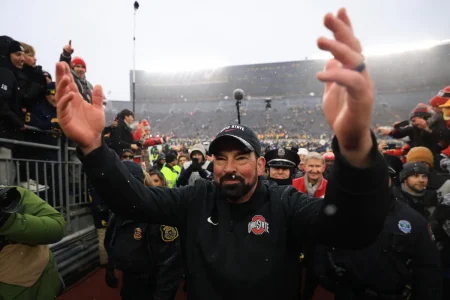South Korea’s Nuclear Submarine Ambitions Set to Unnerve North Korean Leadership
South Korea’s defense minister Ahn Gyu-back made bold claims recently that the country’s future nuclear-powered submarines, to be developed with American assistance, will significantly disrupt North Korean leader Kim Jong Un’s peace of mind. Speaking on a KBS program, Ahn stated that these submarines’ enhanced endurance and stealth capabilities would make Kim unable to “sleep well.” This development comes as part of Seoul’s broader military modernization efforts aimed at countering North Korea’s growing nuclear and missile arsenals. While these submarines will remain conventionally armed (not carrying nuclear weapons), their nuclear propulsion systems will dramatically extend their operational capabilities. “Theoretically, as long as food supplies are maintained, [a nuclear-powered submarine] does not need to surface,” Ahn explained, highlighting how these vessels could remain deployed around the Korean Peninsula for extended periods, creating a persistent underwater threat that Pyongyang cannot easily track.
The submarine initiative gained international attention when U.S. President Donald Trump announced during his October visit to South Korea that he had approved Seoul’s plan to develop nuclear-powered submarines. This move represents a significant advancement for South Korea’s naval capabilities, which currently rely on diesel-electric attack submarines as part of the country’s “three-axis system” defense strategy. The minister revealed that the military has been preparing for this capability leap for more than three decades, saying, “We assess that we have reached a significant level, nearing completion as long as fuel is available.” According to Ahn, South Korea has already developed considerable expertise in critical technologies such as reactor assembly and power conversion systems, suggesting that while such projects typically require over a decade to complete, South Korea could accomplish this in less time with American support.
Despite Trump’s statement that the submarines would be built in Philadelphia, questions immediately surfaced regarding this arrangement, particularly since Philadelphia Shipyard (now known as Philly Shipyard) was acquired last year by South Korean conglomerate Hanwha. Defense Minister Ahn clarified that building the submarines in South Korea would be the “most rational approach,” noting that Philly Shipyard currently lacks the necessary facilities for such sophisticated construction. He also recounted his meeting with U.S. Defense Secretary Pete Hegseth, who reportedly emphasized that “Trump’s will” to support the South Korean submarine project remains strong, with promises of “active support” from the American side. This arrangement likely involves the United States providing enriched uranium for the submarines’ reactors, while South Korea contributes its advanced shipbuilding expertise.
The scale of South Korea’s nuclear submarine ambitions was outlined on October 30, when Ahn suggested that the country should acquire at least four nuclear-powered submarines. This fleet would significantly enhance Seoul’s underwater capabilities, though the South Korean navy estimates it will take approximately ten years before the first vessel is operational. South Korean President Lee Jae Myung has framed this initiative not only as strengthening his country’s defense posture but also as potentially reducing America’s military burden in the region, stating during his summit with Trump that “if [nuclear] fuel supply is permitted, we can build several submarines equipped with conventional weapons using our own technology to defend the waters around the Korean Peninsula, ultimately reducing the burden on U.S. forces.”
This development holds broader strategic implications for the Indo-Pacific region, where the United States has deployed its own nuclear-powered submarines to counter China’s growing naval power. By enhancing South Korea’s submarine capabilities, Washington appears to be distributing some of its regional security responsibilities to capable allies. The nuclear-powered submarines would offer dramatic improvements over South Korea’s current diesel-electric fleet, which must periodically surface or use snorkels to recharge their batteries. In contrast, nuclear propulsion allows for extended submerged operations, greater speed, and the ability to carry more weapons and equipment. These advantages would significantly complicate North Korea’s defense planning and potentially serve as a powerful deterrent against aggression.
As this initiative moves forward, many details remain to be clarified, including the specific arrangements for shipbuilding locations, technological transfers, and operational capabilities. The U.S.-South Korean submarine agreement represents a significant evolution in their alliance and signals Washington’s willingness to share sensitive nuclear propulsion technology with a key regional partner. While North Korea has not yet officially responded to this development, the prospect of South Korean nuclear-powered submarines patrolling the waters around the peninsula will likely prompt concerns in Pyongyang and potentially affect regional security dynamics. As Minister Ahn suggested, these submarines could create a psychological effect on North Korean leadership beyond their tactical military value—a capability that will remain undetected beneath the waves but ever-present in strategic calculations across Northeast Asia.













